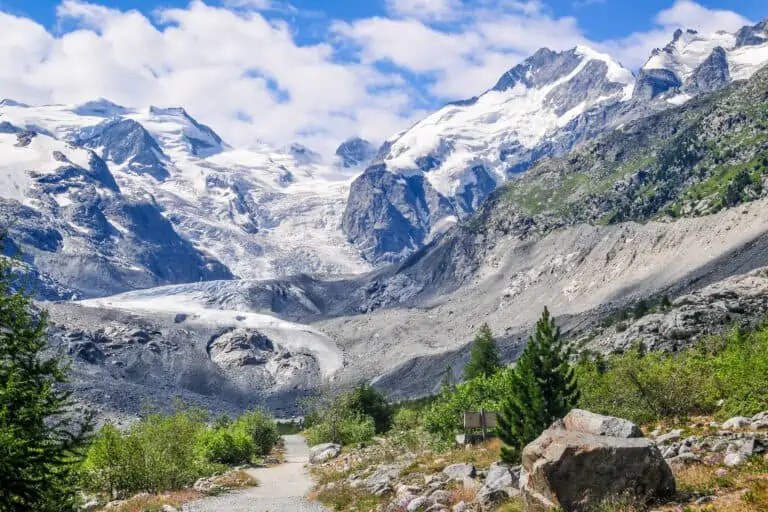The climate is changing, in Switzerland too
How climate is changing in Switzerland
The climate is changing due to global warming. This also goes for the Swiss Alps. Examples:
- The average temperature in Switzerland is rising. Heat waves occur more often, and very low temperatures are becoming more rare.
- Glaciers are melting away.
- There are fewer days with snowfall.
- Spring is getting wetter in the northern Alps and drier in the southern regions. There’s a downward tendency of precipitation in winter in the Alps and in western Switzerland.
The risks are far greater than possible benefits
Climate change is now a fact, but is it a bad thing? Yes, it is. Global warming caused by humanity is causing a very rapid climate change, much quicker than nature itself would cause. It’s not climate change itself that is a problem per se: the climate is always changing. It’s the pace that is causing, and will cause, many problems around the globe.
There are upsides too, like the possibility of better-growing crops in shifting temperate zones, but the disadvantages and risks are far greater. That goes for Switzerland as well.
The risks of a changing alpine climate
The Alps are delicate. These are examples of the effect that climate change has on Switzerland:
- Summers are expected to keep getting warming and drier.
- Winters are expected to become moister, which increases the chances of flooding.
- Heavier rainfall is becoming more frequent, again increasing risks of flooding.
- Rising temperatures already cause rockfalls, as permafrost zones (rocks and soil that used to be frozen permanently) are now melting. This is causing massive rock slides. The Eiger and Matterhorn are examples of famous mountains that already suffered from this phenomenon. It can be a direct threat to villages too. The town of Pontresina built a huge dam in 2003, to protect itself from mud and rock slides.
- A large part of the Swiss glaciers will melt away; a process that has started decades ago.
- There will still be snow in the mountains, but not so much in regions below 1,500 or even 2,000 m. Winter sports will most probably not be possible there anymore.
- Flora and fauna will change as climate zones shift to the north.
- Tourism and thus the economy is being affected as well. For example: summer skiing was once possible on Mount Corvatsch. In 1988, this was becoming more difficult because of the retreating glacier. In 1992, the conditions had become even worse and summer skiing is no longer possible ever since.
Switzerland is taking measures to protect the environment and prevent climate change. But it obviously can’t stop a global problem from having an effect on the Alps. Many predicted effects are already becoming a reality.
Things you can do to protect the Alps
It’s quite easy to help to protect the Alps while you visit them. The way you travel and the things you buy make a big difference. See what you can do.
Other websites of interest
- www.meteoschweiz.admin.ch: the climate of Switzerland
- www.meteoschweiz.admin.ch: climate change in Switzerland
- nationalgeographic.com: global warming explained
- unfccc.int: United Nations Climate Change

